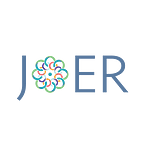Incarceration and Policing Experiences
NOTE: these research summaries were initially developed by LGBTQ+ representatives from RAND, SPEC, and A.B.O. Comix based on their personal reactions to the themes depicted in the selected artwork. Individual artists may or may not agree that these summaries are the best representation of the themes in their work. We have solicited artists’ reactions to the themes and will update these summary pages over time based on their input.
A reality for LGBTQ+ people is that we are more likely to be arrested or incarcerated. The highest rates are experienced by those among us who are most marginalized by society, such as trans and nonbinary individuals and those with minoritized racial or ethnic identities. Much of this incarceration is driven by cycles of economic disadvantage that criminalize poverty while increasing the likelihood that LGBTQ+ people stay poor. The ways our sexual and gender identities have been criminalized further underscores how policing and incarceration often punish LGBTQ+ people rather than protecting and serving us. Read our other research summaries (listed at right) for more information about how LGBTQ+ people are affected by our experiences with policing and incarceration.
Artists in Theme
Linda Alvarez, Feather, Michael Eaton, Solo, Shelly, Maxwell Moore, Geremy Sledge, Billy Thomas, Horace Thomas, Reginald Toliver, Kinoko
References
Hanssens, C., Moodie-Mills, A. C., Ritchie, A. J., Spade, D., & Vaid, U. (2014). A roadmap for change: Federal policy recommendations for addressing the criminalization of LGBT people and people living with HIV. Center for Gender & Sexuality Law at Columbia Law School. https://web.law.columbia.edu/sites/default/files/microsites/gender-sexuality/files/roadmap_for_change_full_report.pdf
Meyer, I. H., Flores, A. R., Stemple, L., Romero, A. P., Wilson, B. D. M., & Herman, J. L. (2017). Incarceration rates and traits of sexual minorities in the United States: National Inmate Survey, 2011–2012. American Journal of Public Health. https://www.ncbi.nlm.nih.gov/pmc/articles/PMC5227944/
Mallory, C., Hasenbush, A., & Sears, B. (2015). Discrimination and harassment by law enforcement officers in the LGBT community. UCLA: The Williams Institute. https://escholarship.org/uc/item/5663q0w1
Vera Institute of Justice. (2020). Backgrounder memo for the Alternatives to Incarceration Work Group on people who Identify as transgender, gender-non-conforming, and/or intersex (TGI). https://ceo.lacounty.gov/wp-content/uploads/2020/12/TGI-Final-ATI-Memo-1.31.2020.pdf
Wilson, B. D. M., Gomez, A.-G., Sadat, M., Choi, S. K., & Badgett, M. V. L. (2020). Pathways Into Poverty: Lived experiences among LGBTQ people. UCLA: The Williams Institute. https://williamsinstitute.law.ucla.edu/publications/pathways-into-poverty/
Wilson, B. D. M., Jordan, S. P., Meyer, I. H., Flores, A. R., Stemple, L., & Herman, J. L. (2017). Disproportionality and disparities among sexual minority youth in custody. Journal of Youth and Adolescence. https://www.ncbi.nlm.nih.gov/pmc/articles/PMC5844288/
